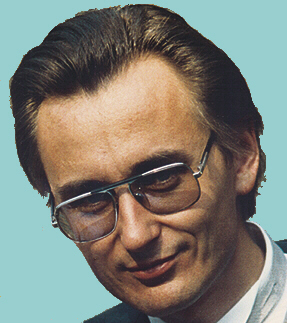Welcome to the source in the Cradle.
Story of Aquamine.
 Early in 1983 Gunnar Schillings , the founder of Aquamine mineral water came from Germany
to South Africa as a water process engineer. Being an enthusiastic mineral water drinker,
he bought case lots of mineral water every week to quench his thirst. He had to revert to
imported waters from Italy, Germany and France, as the two locally bottled waters were of
dubious origin, as they were not bottled at source and hence did not comply with standards
that he was used to from European countries. Soon afterwards he got the idea to produce
mineral water bottled at a South African source. He travelled on weekends and during vacation
time all over South Africa to study the local natural waters. First trips were undertaken to
the lovely Drakensberg mountain range and to what was then known as the Eastern Transvaal,
and to the Cape as the abundance of springs in these areas is enormous and to be able to
set up business in such areas seemed intriguing.
Early in 1983 Gunnar Schillings , the founder of Aquamine mineral water came from Germany
to South Africa as a water process engineer. Being an enthusiastic mineral water drinker,
he bought case lots of mineral water every week to quench his thirst. He had to revert to
imported waters from Italy, Germany and France, as the two locally bottled waters were of
dubious origin, as they were not bottled at source and hence did not comply with standards
that he was used to from European countries. Soon afterwards he got the idea to produce
mineral water bottled at a South African source. He travelled on weekends and during vacation
time all over South Africa to study the local natural waters. First trips were undertaken to
the lovely Drakensberg mountain range and to what was then known as the Eastern Transvaal,
and to the Cape as the abundance of springs in these areas is enormous and to be able to
set up business in such areas seemed intriguing.
Unfortunately the samples from all these areas showed waters with extremely little mineral
content, which makes probably good ice cubes, but will taste bland on its own and whence
carbonated will taste sour as these waters have no buffer capacity in the form of minerals
to balance the added carbon dioxide bringing in the sparkle. The goal was to find a water
that comes from dolomite rock formations and exhibits amounts of calcium and magnesium
carbonate and only little salt in the form of sodium chloride. Such waters were at that
time and still are today the world favourites for a good balance in taste and are considered
as well as being the healthiest. They do not overload the consumer with minerals that he or
she does not want, like sodium, and they do not drain the drinkers mineral balance like
some waters, which contain next to no minerals at all. Basically all of the world best
selling waters, like Evian and Perrier from France, San Pellegrino and Ferrarelle from
Italy and Gerolsteiner from Germany have a definite dolomite composition and taste and
are thus preferred to the fashionable waters of previous decades like Vichy from France or
Selters and Apollinaris from Germany which have high amounts of Sodium and taste salty or
soda like, or the original Crodo from Italy, which has enormous amounts of sulphates, or
for that matter the Spa of Belgium, which has basically nothing at all (good for ice cubes
as a recent German publication was putting it).
Taking geological maps with on the discovery, Gunnar Schillings found the area close to the
old Sterkfontein caves and the Wondercave
not only interesting because of ancient history
and proximity to Johannesburg and Pretoria, but found a spring which flows consistently even
during times of draught and is of dolomite origin. It is located in the heart of the Kromdraai
Nature Conservancy, which received in December 1999 World Heritage Status by UNESCO as the
"Cradle of Humankind". Have a look at the highlighted links referring to the caves and history.
It is surrounded by game parks, like the Rhino and Lion park of Kromdraai and some private game
reserves. No polluting industry is found higher up the mountains, guaranteeing consistence of
purity for the future. It took three years of extensive studies to home in on the source.
For the person interested in mineral waters a couple of books are available, some of them are
a bit more country and area specific.
The best book originally published in 1985 and now available in an updated second edition from
1994 can be obtained from:
Rosendale Press Ltd, Premier House 10 Greycoat Place, London SW1P 1SB, Great Britain
and it's called "THE
GOOD WATER GUIDE" by Maureen and Timothy Green. The Greens cover waters
from all over the world, and give detailed information about composition, history and production
volumes. Recommendable.
Verweise auf beliebige Dateien
Downloads:
logo.jpg
Photo with our sparkling Mineral Water in action
product-photo.jpg
Photo of all our products
Devereux.jpg
Magazin clip
Style.jpg
Magazin clip
Wine1.jpg
Magazin clip
Wine3.jpg
Magazin clip
Wine4.jpg
Magazin clip
|
|
|